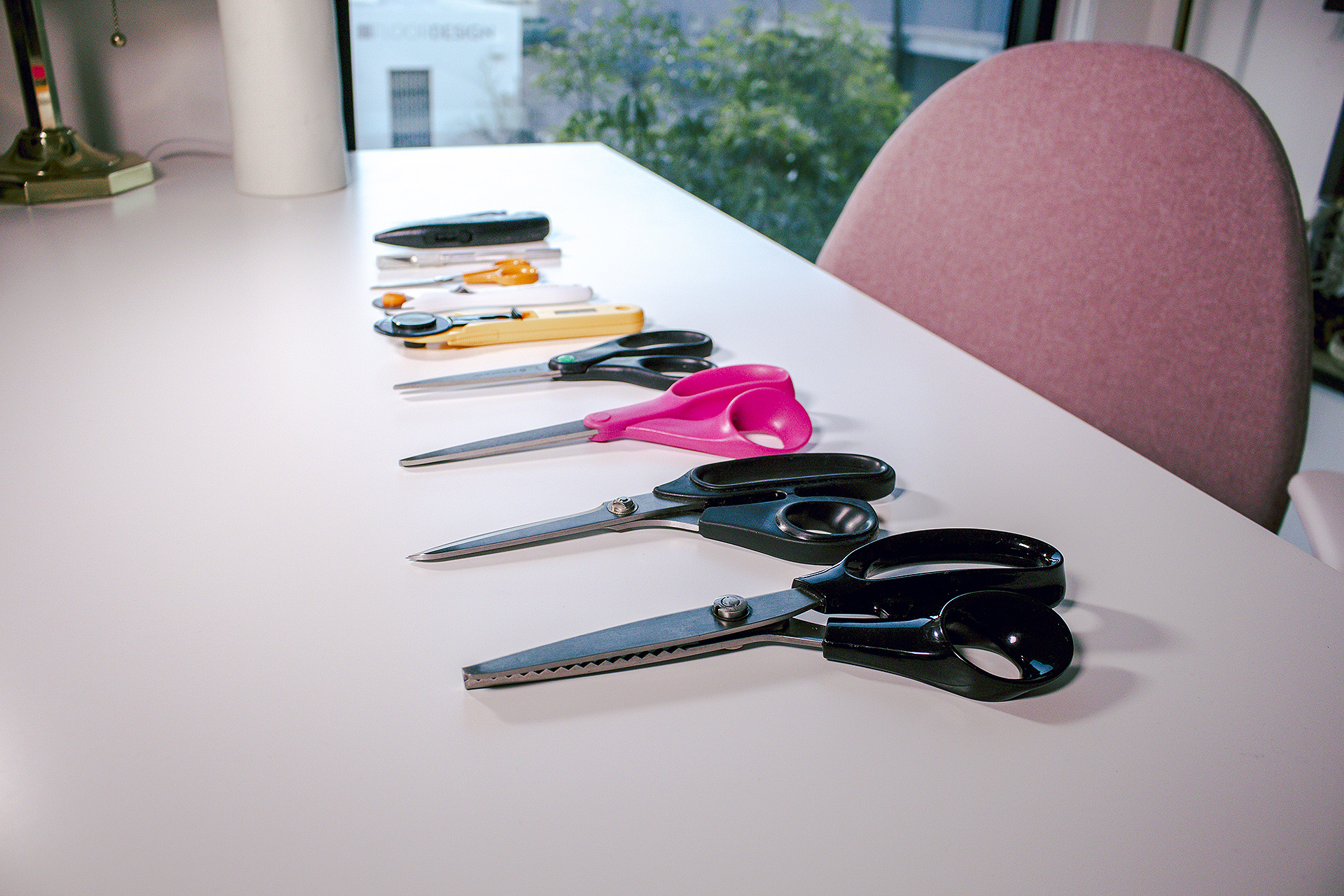There is so much to spend your money on when starting out sewing that it’s easy to fall down the rabbit hole of buying everything. Or… buying a lot of cheap stuff. Do you know what sewing tools to invest in?
Do you know what sewing tools you bought on a budget… but deserve an UPGRADE?
This post is written for people interested in upgrading their sewing tools, breaking down which ones should be upgraded first!
BIG DISCLAIMER! You can get very VERY far using budget tools. But if you have the opportunity to invest in sewing tools in this list, they make a difference.

You don’t have to spend money on All The Things when it comes to sewing supplies.
Investing in the right tools can support you in creating a garment that’s sturdy and well constructed. Time and time again.
Invest in this Sewing Tool: Your Sewing Machine

When I asked Vintagettes what was the sewing tool they invested in, over 95% of them said their Sewing Machine! It goes to show that this one is a biggie- you can’t get around it.
Prices range from extremely cheap ($25 machine) to extremely expensive ($3,000+!) It’s easy to get lost on this tool alone.
Keep in mind that for budget sewing machines:
- They tend to be mostly plastic, which weigh too little. This means they tend to bounce around more often, which affects their timing and internal alignments
- Cheap machines also tend to have limited settings (or worse) too many novelty settings. These tend to be rarely used for garment sewing, taking away from having more SOLID basic stitches
- Cheap machines also tend to lack attachments or tools which you might need. Or they’re made of cheap materials which will fall apart easily.
What makes a sewing machine more valuable?
- Pricier machines tend to be heavier, which don’t bounce on your table (think of them like a tank)
- They have more robust basic stitches. The straight stitch, zig zag, etc tend to have less issues over time, maintaining proper length, etc., and not skipping
- Attachments are almost always included and don’t generally have to be replaced since they’re a lot more built for time
If you’re looking to upgrade from an entry level or cheaper machine and don’t want to break the bank…
- Consider the budget (obviously)
- Think about what you actually use, day to day. For example, I tend to ONLY use a straight stitch, zig zag, and back stitch.
- Think of what’s a nice to have versus a MUST
- Must have a buttonhole foot
- The machine must have all the attachments so I don’t have to buy them one at a time
- Be easy to fix with a local repair person (or not)
Invest in this Sewing Tool: Steam Iron

If you watched my Top Beginner Sewing Mistakes video, you’ve heard me say, “you should spend as much time worrying about your iron as you do with your sewing machine.“
While it seems like a basic tool, an iron has a lot of power in how you manipulate the fabric and fibers themselves. These details are ones that get skipped over by beginners. But in reality, they play one of the bigger factors in making something look professional and neat.
Click HERE to learn more about Top Sewing Problems (and how to work through them)!
What makes an iron more valuable?
- Consistent control over temperature
- Consistent control over steam output
- They tend to weigh more and require less downward pressure to fuse interfacing
If you’re using an entry level iron and don’t want to break the bank, I would recommend considering…
- The size of the water tank needed on the iron?
- What granularity do you want in temperature control?
- How much steam control is needed?
- Retractable cable or wireless?
- Is it just for sewing or for regular clothing as well?
Invest in this Sewing Tool: Cutting Implements

This one is a tricky one, because everyone’s tolerance for a “nice version” of this can vary widely.
Some people like tools with better handles, some people like having decorative ones. Some like heavy scissors and cutting tools, some like lighter ones due for ease of use, especially for joint pain.
I have a wide range of cutting implements and each has a different purpose, collected over the years. None of these serve double purpose– they’re all very specific about what I need them to do.
At the end of the day, I’m looking for quality, sharp tools. Tools which hold their edge the longest and which can be sharpened.
Why? The main reason is around SAFETY. Also, cheap tools can damage fabric.
If you’re looking for new cutting tools, think about these things:
- Is this going to be comfortable to hold for potentially HOURS of time?
- What do I need this to actually cut through?
- What are my sharpening options?
Learning How to Invest in Sewing Tools takes time, but this list should get you up and running!

Every tool is not only an investment, but it’s something you should be able to rely on again and again over the years.
You don’t have to break the bank. A lot of the items on this list can be bought at a discount, with coupons, or on heavy markdown. Keep an eye out on your local stores and be sure to save up for the equipment you would really want use.

Like what you see?
